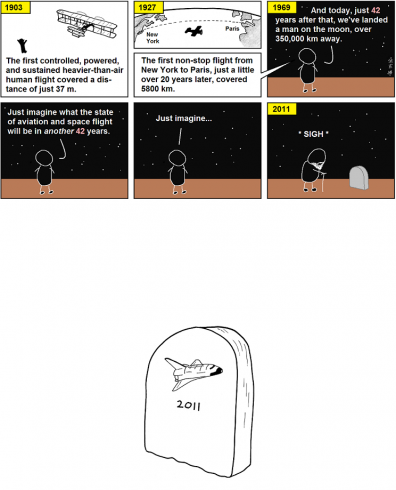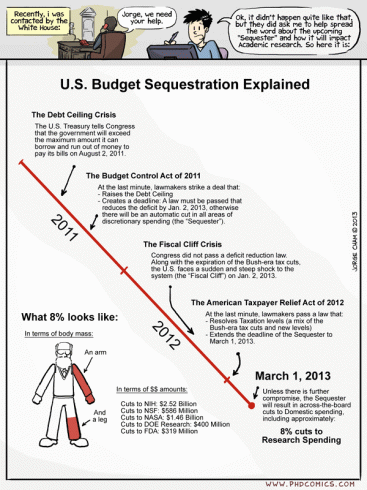NASA: Then and Now

NASA Mission Control celebrates the successful return of Apollo 11 lunar landing mission on July 24, 1969.
44 years ago today, the Apollo 11 lunar landing mission returned to Earth by splashing gently into the Pacific 400 miles off the coast of Wake Island.
This is the mission that carried Neil Armstrong and Buzz Aldrin to become the first humans to ever set foot on the moon. The achievement of reaching the moon with 1960’s technology is simply incredible. For example, the Apollo Guidance Computer weighed 70 pounds, ran at 2 MHz (about 500-1,000 times slower than an average smartphone), and had 2K of RAM (one million times less than a modern computer). NASA released this picture of the epic celebration in mission control when the mission ended successfully.
So, that was 44 years ago. Where are we now?
Well….
Also in 1969, NASA developed a plan for reusable spacecraft called the Space Transportation System, which became unofficially known as the space shuttle. The shuttles, typically credited for being the most complex vehicles ever built, ultimately flew 135 missions from 1981 to 2011. But now the shuttle program is officially retired:
Even though humans haven’t been to the moon since 1972, but in the meantime, NASA has gotten to be quite good at launching robots into space. This blog post is really about three really awesome images from satellites.
1. If you were standing outside on July 19th, then the Cassini spacecraft took a picture of you. Of course, it was 900 millions away behind the rings of Saturn, so it might be hard to pick yourself out of the crowd, but nonetheless the JPL was encouraging everyone to go outside and wave. The picture is staggering:
2. This recent NASA Picture of the Day was taken two weeks after a tornado ripped through central Oklahoma on May 20, 2013. In this false-color image, vegetation is red while roads and buildings are gray. The tornado track leaves a jagged scar running across the middle of the picture.
3. If zoom in a bit more on Cassini’s picture, we might get something like this:
This picture was taken from the International Space Station 240 miles above Earth. Houston is visible near the bottom-right. Near the top-middle you get the Dallas-Ft. Worth metroplex, and I-35 running to left with Waco, Austin, and San Antonio. Of course, the bright spot to the left of the metroplex is none other than Abilene.
The shuttle program may be over, but we are still exploring space. Curiosity is waiting for us on Mars–time for a visit!
-Dr. D








